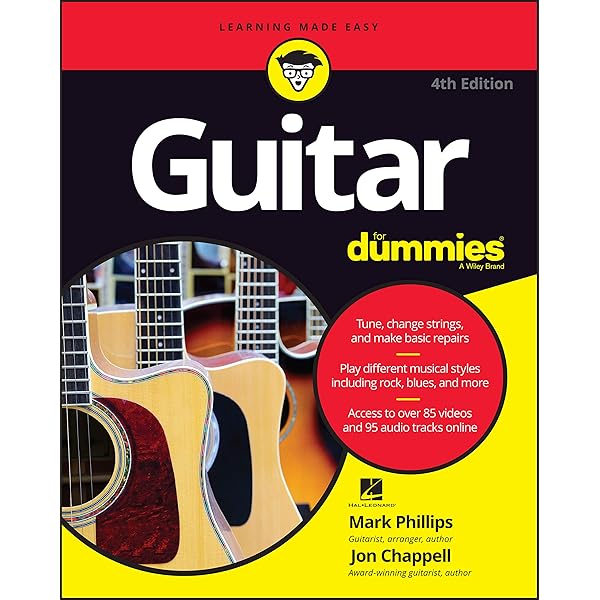Guitar for Dummies

The old, stained Yamaha acoustic, perched precariously in the corner, had seen better days. Its action was high enough to double as a cheese grater, and the intonation… well, let’s just say it favored the dissonant. Yet, it was my teaching guitar. Students would wrestle with it, and then, hopefully, appreciate the playable instruments I’d bring to their lessons. The whole point was to make their struggles… manageable.
Which brings us, of course, to Guitar for Dummies. I’ve seen countless copies – worn covers, dog-eared pages, all testament to beginner battles won and lost. And as a multi-style guitarist, yes, even someone who wrestled with complex arranging in his youth, I return to it.
Chappell and Phillips, in their latest edition, understand the raw material. They present a very grounded approach. Forget flashy solos for now. The core – building chords, reading standard notation (essential!), and understanding rhythm – is emphasized from the start. The “For Dummies” format works because it’s not condescending; it breaks down complex concepts into bite-sized, digestible chunks. The accompanying CD (or, more accurately, the now-included digital access) is a lifesaver. Hearing those exercises performed correctly is priceless, especially when trying to master a barre chord. Believe me, I’ve encountered students that are more than a bit tone-deaf.
Consider, for instance, the section on alternate tunings. The book doesn’t just mention them. It guides you through why they exist, the altered soundscapes they unlock, and the practical fingerings you’ll need. This is a step up from the older editions that felt like a quick introduction, while now offering detailed progressions and application.
One minor quibble: While the book touches on improvisation, it could delve deeper into the pentatonic scale. It’s the lingua franca of blues, rock, and a lot of other styles, and a more robust section would catapult beginners toward creative expression. But, you know what? Supplementing this with online resources – there are tons of free pentatonic scale lessons available – is a perfectly acceptable workaround. It’s not a deal-breaker.
For someone who is truly starting from ground zero, I’d suggest this over Hal Leonard’s Guitar Method. The latter feels a little too sterile for many. Guitar for Dummies is a friendlier, more encouraging companion. It’s a manual that doesn’t just teach you to play the guitar, it actually inspires you to want to. Therefore, if you’re looking to finally tame that six-string beast, this is an excellent starting point. Grab a copy. You’ll thank me later.